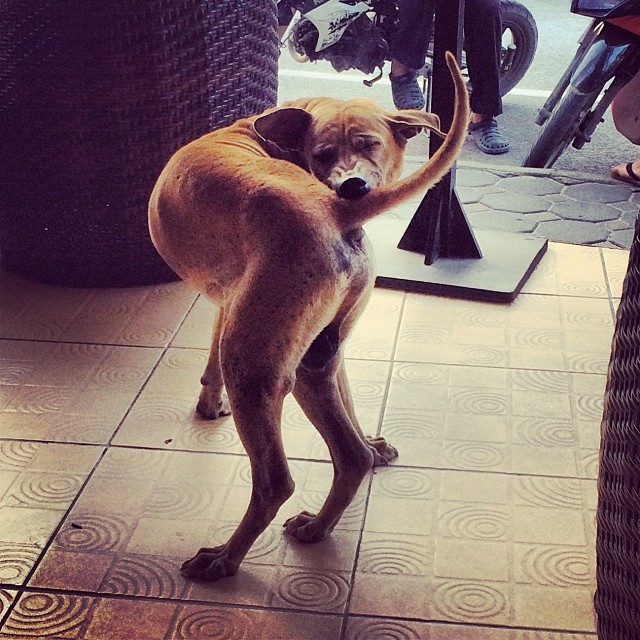If you’ve spent any time researching the various treatment options available for flea infestations, you may have come across something called integrated pest management (IPM).
In recent years, IPM has become an increasingly popular method for treating a wide variety of common pests, including the dreadful blood-sucking flea. But what exactly is IPM? And how does it work? To learn the answers to these questions and more, keep reading.

Dog scratching fleas: photo by ToGa Wanderings.
The U.S. Environmental Protection Agency (EPA) defines IPM as the following:
“Integrated Pest Management (IPM) is an effective and environmentally sensitive approach to pest management that relies on a combination of common-sense practices. IPM programs use current, comprehensive information on the life cycles of pests and their interaction with the environment. This information, in combination with available pest control methods, is used to manage pest damage by the most economical means, and with the least possible hazard to people, property, and the environment.“
In Other Words…
Integrated pest management is a broad ‘blanket’ term used to describe any form of pest management that involves environmentally safe practices. In the old days, it wasn’t uncommon for farmers to blast their crops with heavy chemical-ridden pesticides in hopes of keeping their crops safe. While this was certainly an effective way to prevent insects from eating into their profits, it also came with the unwanted side effect of tainting nearby water supplies. This forced farmers to look for alternative means to prevent pest infestations.
New methods of pest control are based around environmentally friendly practices. Chemicals may still be used to control pests, but only those which have minimal impact on the environment are chosen. In addition, there’s a greater focus on techniques involving the removal of the pests’s food, habitat, etc.
IPM and Flea Control
There are several different ways to incorporate IPM into a typical flea infestation in the home. Whether you are suffering from a minor or severe flea infestation, one of the first things you should do is clean your pet’s bedding. Female fleas love to lay their eggs on a dog or cat’s bedding.
Also, using either an insect growth regulator (IGR) or insect development inhibitor (IDI) may also help to control flea populations without harming the environment or surrounding species (including yourself).
What’s your take on IPM? Let us know your opinion in the comments section below!
